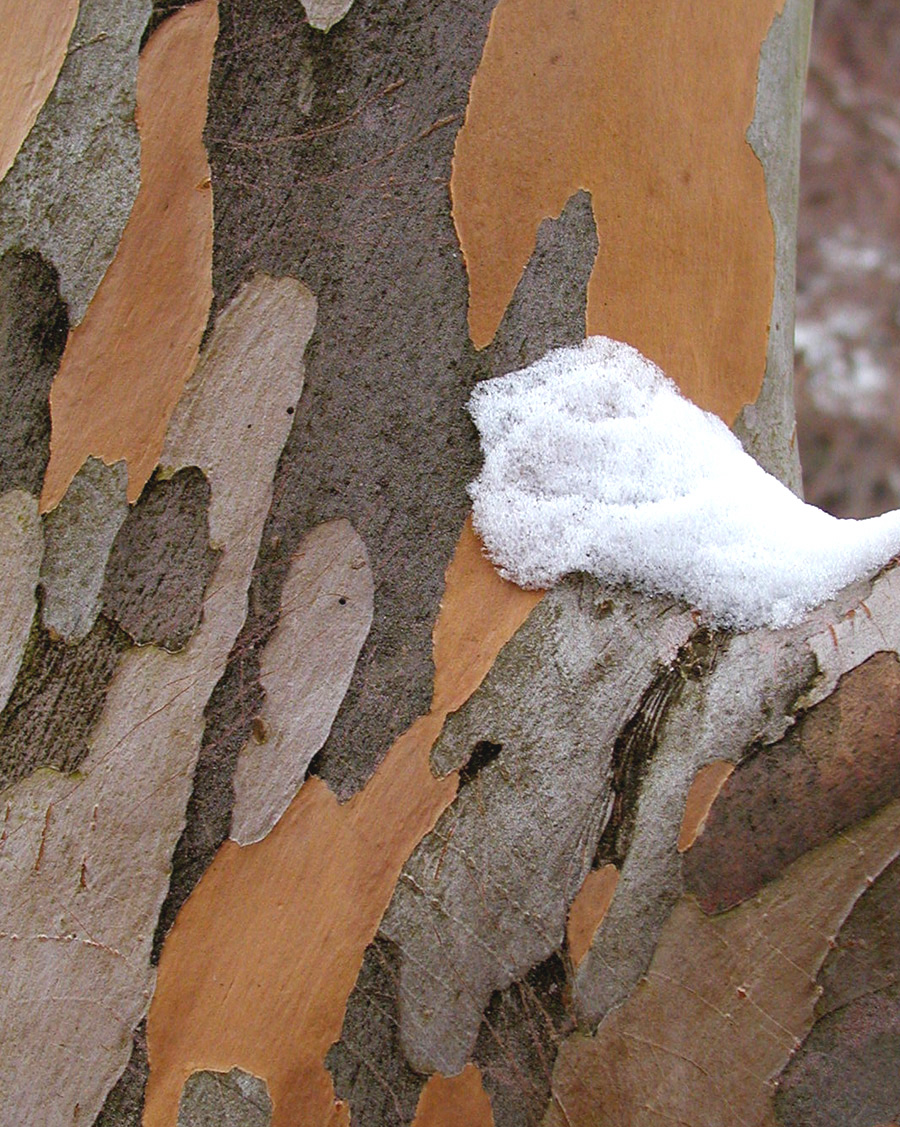
Few genera encapsulate the Arnold Arboretum’s capacity to investigate botanical and horticultural questions better than Stewartia. Along with the Franklin tree (Franklinia alatamaha), stewartias represent the deciduous and reliably hardy plants of the tea family, Theaceae. While Asian species of stewartia may reach heights of more than 40 feet in the wild, cultivated specimens typically grow as large shrubs or small trees, as do both North American species (S. malacodendron and S. ovata). Displaying white flowers in early- to mid-summer and often featuring striking bark hues and textures, the six hardy species in Stewartia provide remarkable year-round interest. Two Japanese stewartias (S. pseudocamellia) have proven to be the longest-lived and arguably the most horticulturally productive specimens of the genus at the Arboretum. Both plants (AA 11440A and 11440B) originate from a seed collection made in 1917 by plant explorer Ernest Henry Wilson at the densely-wooded base of Mt. Jirisan in South Korea.

Growing adjacent to each other on Chinese Path atop Bussey Hill, these two individuals have reached heights of 32 and 27 feet respectively—remarkably comparable in size to those of the wild population in which they were discovered. Originally considered a separate species (S. koreana), they were affectionately described by Wilson in 1929 as possessing a more “cheery personality” than the Arboretum’s Japanese collections of S. pseudocamellia. Indeed, over the years they have demonstrated the distinct hardier character as well as ornamental potential of the Korean provenance through a longer flowering period and greater persistence of individual blooms. Of particular note, S. pseudocamellia #11440*A crossed spontaneously with S. ovata var. grandiflora (mountain stewartia) at the Arboretum to produce the hybrid Stewartia ‘Scarlet Sentinel’, a cultivar distinguished for the vibrant cherry-red color of its flowers’ anther filaments (read more about its discovery and introduction in Arnoldia 62/3).
In addition to its ornamental significance, the Stewartia collection holds immense botanical potential as one of eight national collections of genera at the Arboretum through a partnership with the Plant Collections Network of the American Public Garden Association and the USDA. With a long history of plant exploration and multiple accessions of the hardy members of the genus represented in its landscape, the Arnold Arboretum is perhaps the best place in North America to observe and learn about these beautiful and fascinating trees.
[From the Spring/Summer 2015 edition of Silva.]